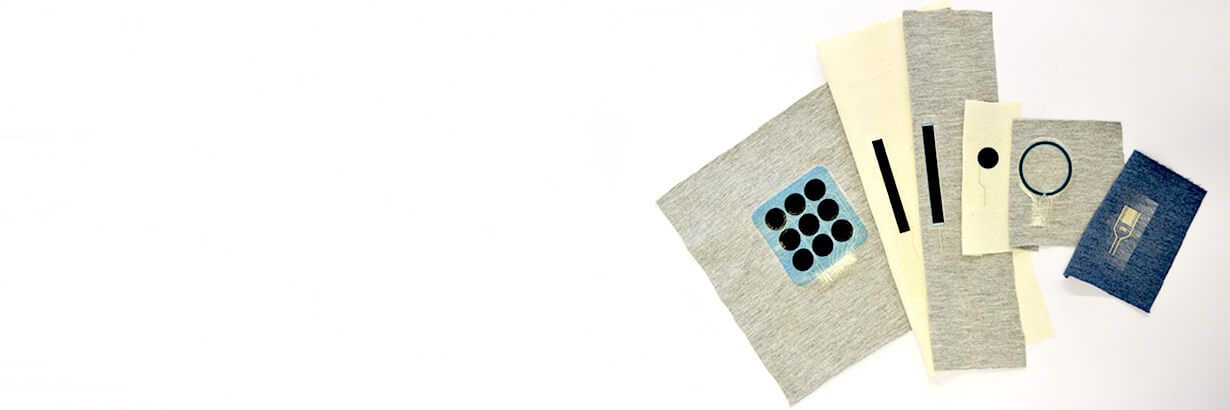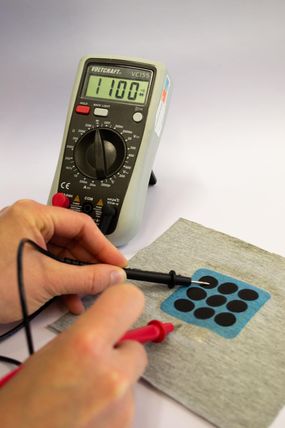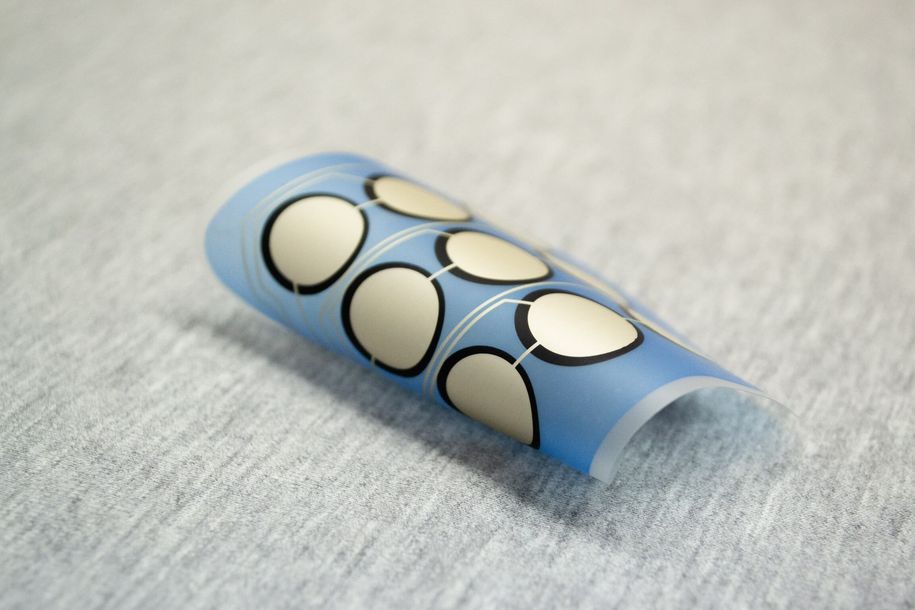
SMART TEXTILES
Printed electronics are in great demand and are being used more and more in many industries. This also applies to smart garments to ensure greater functionality.
Printing Smart Textiles
Printed electronics has the potential to revolutionize many industries. Some of the most interesting possibilities are in the areas of textiles and clothing.

With electronics printed onto a substrate that is then applied to fabrics, we can add sensors, displays or other elements to existing clothing designs, or create entirely new items that take advantage of added features. Printed electronics can be washable and robust – and provide a low-cost way to make textiles 'smart'. They provide sophisticated features, while remaining light weight, flexible and stretchable.
Let’s look at the opportunities for printed electronics in smart textiles, and some example applications. The first possibility that comes to mind is wearable electronics, that enable clothes with have motion and/or pressure sensors, buttons or a complete user control interface, and outputs such as displays or lights. To add more complicated elements such as a microcontroller or a wireless transceiver, printed electronics can if necessary be connected to a rigid PCB, or (thanks to printed electronics) to a flexible circuit board. An interesting use case is Levi’s 'intelligent jacket', which features a touch-sensitive panel on the sleeve that enables a person to control their smartphone via Bluetooth.
Potential applications are practically endless. In sports, athletes can, for example, monitor their heart rate without requiring a distracting chest strap, and record their movements to improve their training routines and achieve better performance.
On the other hand, in healthcare, wearable sensors (constructed as a ‘smart patch’) are ideal for patient monitoring, in applications including wound monitoring, glucose monitoring, continuous ECG and temperature measuring. Printed electrodes in textiles can also be used for neuromuscular stimulation (NMES), to help with muscle strengthening and rehabilitation.
Another of the many possibilities is a smart fabric with sensors that detect poisonous gases, giving firefighters and first responders advanced warning of potentially dangerous toxic conditions. Further uses include printed heating elements combined with temperature sensors to provide safe and comfortable clothing in cooler climates, for example for motorcycle riding and skiing.
Of course, clothing is just one area, but what about, for example, incorporating printed electronics into the fabrics used in vehicles – maybe lighting elements in the roof lining or sensors in the seats?
InnovationLab is developing new ways of using printed electronics in textiles, such as the flexible pressure sensor shown below. Supplying power is still a hurdle to overcome, but InnovationLab’s rechargeable printed battery, using ink developed and manufactured by Evonik, can help. There are also opportunities to use printed solar cells or energy harvesting, for example from motion of the wearer.
As the printed electronics technology rapidly improves, be ready to see many more ingenious applications and use cases – some we can predict today, for others we will just have to wait a little bit longer. Any ideas?

